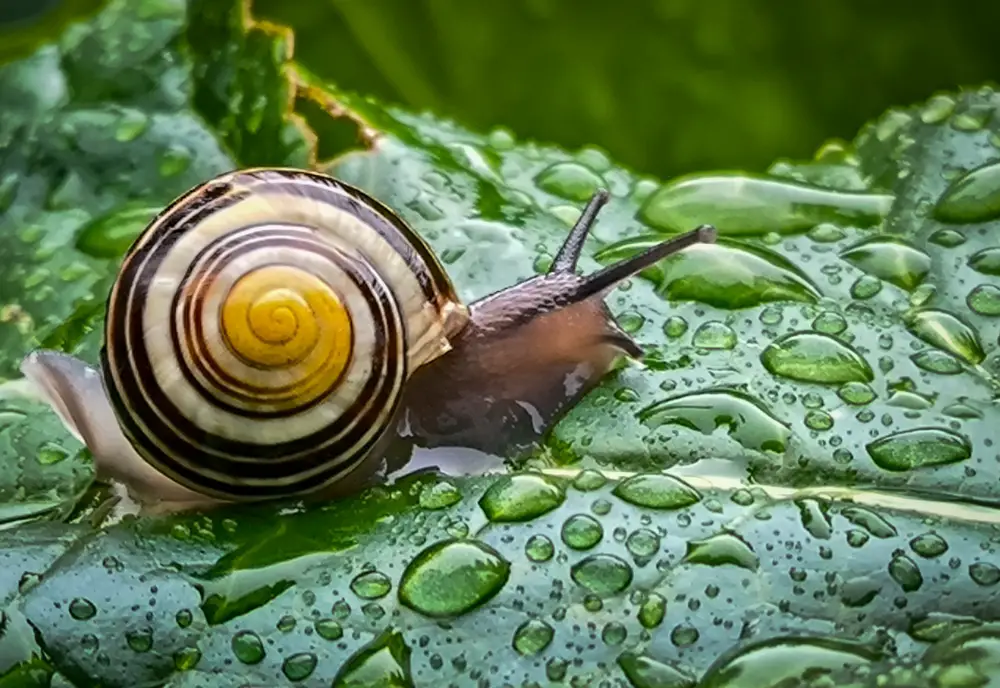Introduction To Snails
Do you have snails in the garden? These intriguing creatures can be both fascinating and frustrating for gardeners. While they may pose challenges in some veggie gardens, they also play an important role in the ecosystem. In this article, I’ll explore some of their unique traits, geographical range, interesting species, and their role in your garden.
What Is A Snail?
Snails are Mollusca Gastropods. Did you know they are more closely related to octopi than insects?! They are also close relative to the slug. Gastropod means they have a head, ventral muscular foot and a shell (slugs have internal shells). Snails have a diverse geographical range and are located on land, in the sea, and everywhere in between!
Snail Anatomy
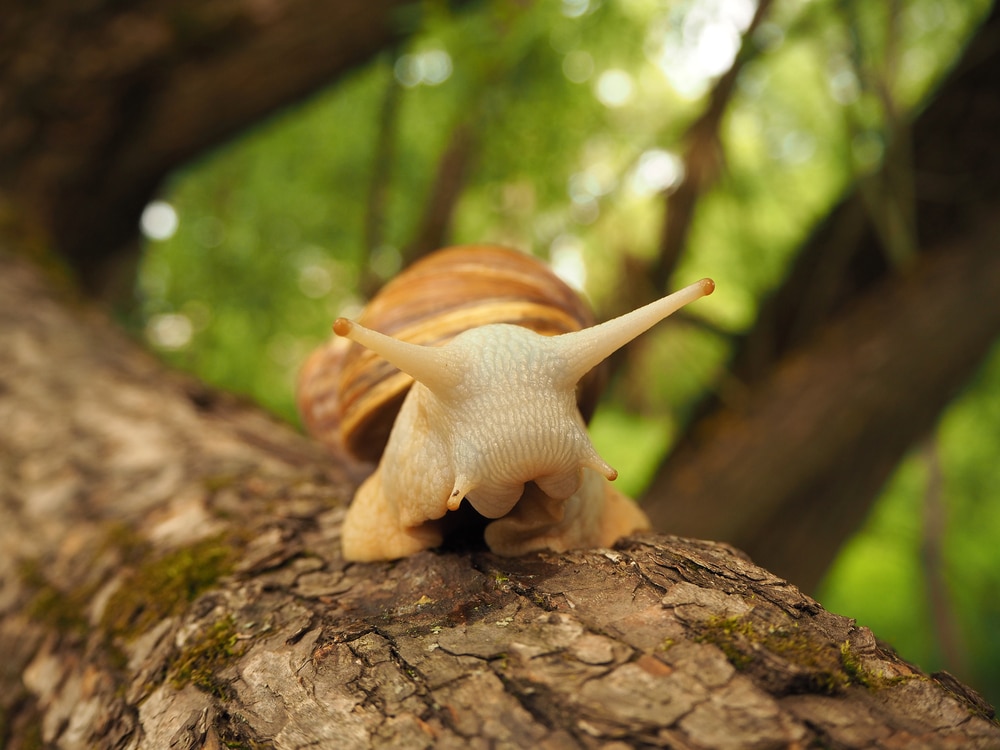
The unique attributes of a snail’s anatomy allow this creature to live in all different types of ecosystems. Each species has special adaptations that enable them to thrive in their unique environment.
How Do Snails Live In Such Diverse Ecosystems?
Broad Muscular Foot
Each species of snail has a broad muscular foot. These “feet” allow for smooth movement in their environments. Aquatic snails that swim have evolved to have wing-like feet that help them swim and glide through their marine ecosystems.
Gills
Marine snails have evolved to have gills. These gills allow them to breathe oxygen underwater.
Venom
Some snails have evolved to be venomous. These are types of snails that have a carnivorous diet, which means they eat animal matter. They use their venom as a part of their hunting strategy to capture and paralyze their food.
Radula
The radula is a snail’s specialized jaw and tongue. Most snail species have a radula. These mouth parts include thousands of small teeth that help them to eat their food. Snails can have more than 25,000 teeth in their lifetime. Just like a shark, their teeth continuously fall out and are replaced.
Other Unique Anatomical Features
Spiral Shells
Snails have shells to protect their organs. This anatomical feature keeps them safe from predators and helps them retain moisture. The shell helps keep the snail from drying out. Shells start as a visceral hump when they hatch and that shell turns into a coil when the snail is in its larval state. When snails hatch, their shells are nearly transparent and very soft.
Poor Vision
Snails have eyes but their vision is poor. Their eyes are located on paired stalk-like tentacles with olfactory (smell) tentacles beneath. They rely on smell and touch to make up for their low-quality vision.
Snails Are Hermaphrodites
Snails have both male and female reproductive organs. During mating, both snails transfer sperm into the other and both carry and lay eggs. Importantly though, snails cannot fertilize themselves, they must mate with other snails to reproduce.
Unique Types Of Snails
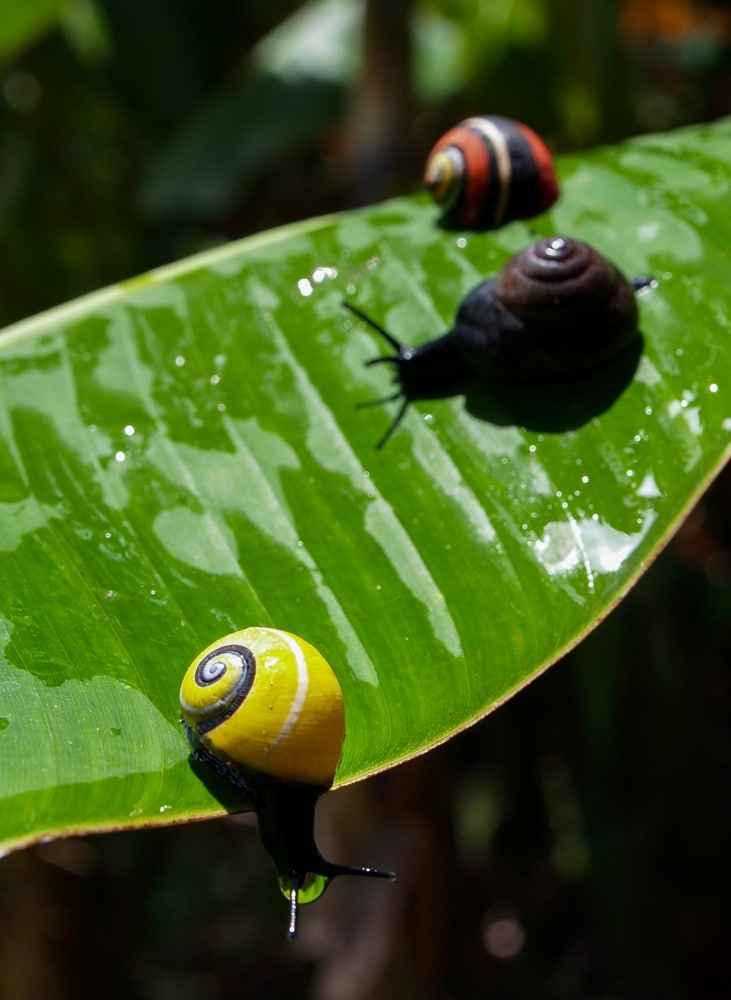
Snails live in a vast range of habitats and are even found underwater! Listed below are some cool examples of different types of snails on this planet.
Nudibranchs
Nudibranchs are also Mollusca Gastropods, meaning they are a close relative of a snail! They are actually considered sea snails. Did you know that nudibranchs are said to have evolved from using a shell 150 million years ago?
Sea Butterflies
Sea butterflies are a unique and beautiful form of sea snail. They have a translucent, delicate shell. Sea butterflies are an important part of the ocean ecosystem. They are a part of the oceanic carbon cycle. This means they play a role in helping to recycle carbon within their aquatic ecosystem.
Candy Cane Snail
The candy cane snail lives in the canopies of trees on the Caribbean Islands. They have unique spiral-shaped shells that look as if it was dipped into a vat of candy cane! This species of snail spends its life living up in the trees. A female will come down to lay her eggs in the soil under the leaf litter of the forest floor.
What Are Snails’ Geographical Range?
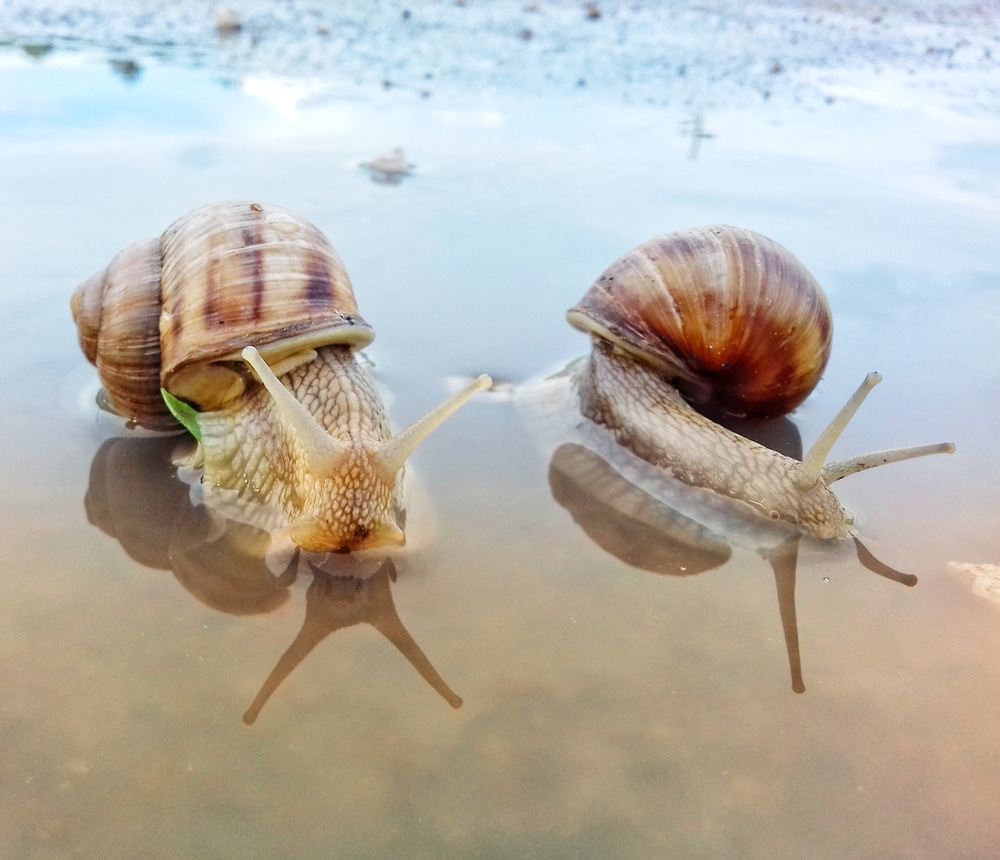
Snails have a large geographical range. They can be found in almost any habitat on every continent, except for Antarctica. There are two main types of snails with different distinct habitats: land and marine.
Land Snails
Land snails occupy the terrestrial environments on this planet. The habitat of terrestrial snails is vast and includes temperate climates, rainforests, deserts, gardens and more.
Marine Snails
Also called sea snails, these creatures occupy aquatic environments around the world. They live in oceans, rivers, freshwater lakes, and brackish waters.
What Is A Snail’s Ideal Habitat?
A snail’s preferred habitat is moist and cool. Like for most creatures, having a food source nearby is also ideal. Although they can live in a wide range of climates, snail survival relies on cool, shady areas, so they can keep from drying out.
They are found in wetlands, forests, gardens, and mountains. You can also find them in urban areas, deserts and the sea. They are wide-spread!
Snail Lifestyle

Snails live a nocturnal existence. They will take refuge during the hot days and wait until the cool of night to come out and eat.
Terrestrial snails hibernate during winter seasons in areas that get colder. During this time they go into a state of torpor, where they decrease their heart and metabolic rates. This state of torpor can also occur during times of extreme heat. During the warmer season, this state is not called hibernation but estivation.
Snail Diet
What Do Snails Eat?
When it comes to a snail’s diet, it is dependent on the species of snail and the habitat they reside in. Most terrestrial snails are considered herbivores. This means they only eat plant matter. There is a large variety in the different species’ diets, and you can find snails that are carnivores and omnivores!
Land snails are considered generalist eaters. This means they are open to a wide range of food. They love new growth of herbaceous plants and will also eat bark, stems, mushrooms, berries, and more!
Because of their love of lettuce and other garden treats, snails are considered a pest in the garden. I’ll dig deeper into the snail’s role in the garden further along in this article.
Snail Life Cycle
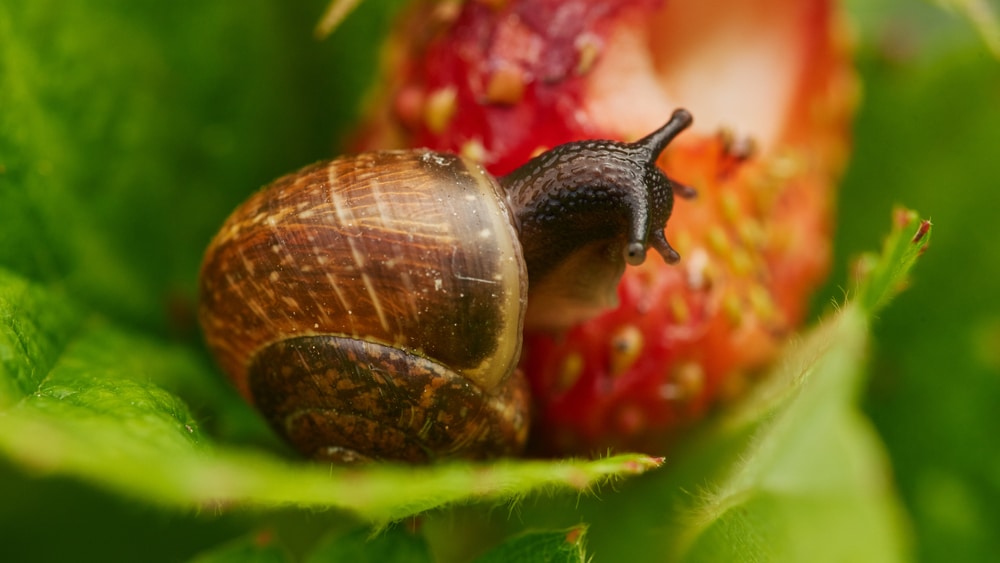
Snails undergo an incomplete metamorphosis, meaning they have three life stages in their life cycle. The life cycles include: egg, larvae, and adult. For terrestrial snails, their lifecycle looks like this:
Egg
Between 100-400 eggs are laid under the soil on the forest floor. This stage of development lasts approximately 4 weeks. Terrestrial snails can lay eggs once a month.
Larvae
Snails emerge from eggs with a soft, delicate shell. This shell continues to grow throughout each snail’s life. In this stage of development, the snails undergo a biological mystery process called torsion. This process is where their internal organs rotate 180 degrees within their shell!
Adult
Depending on snail species, sexual maturity can range from 6 weeks to 5 years. As we covered above, snails are considered hermaphrodites, meaning they have both male and female reproductive organs. Once snails have reached sexual maturity, they begin to mate.
Snails In The Garden
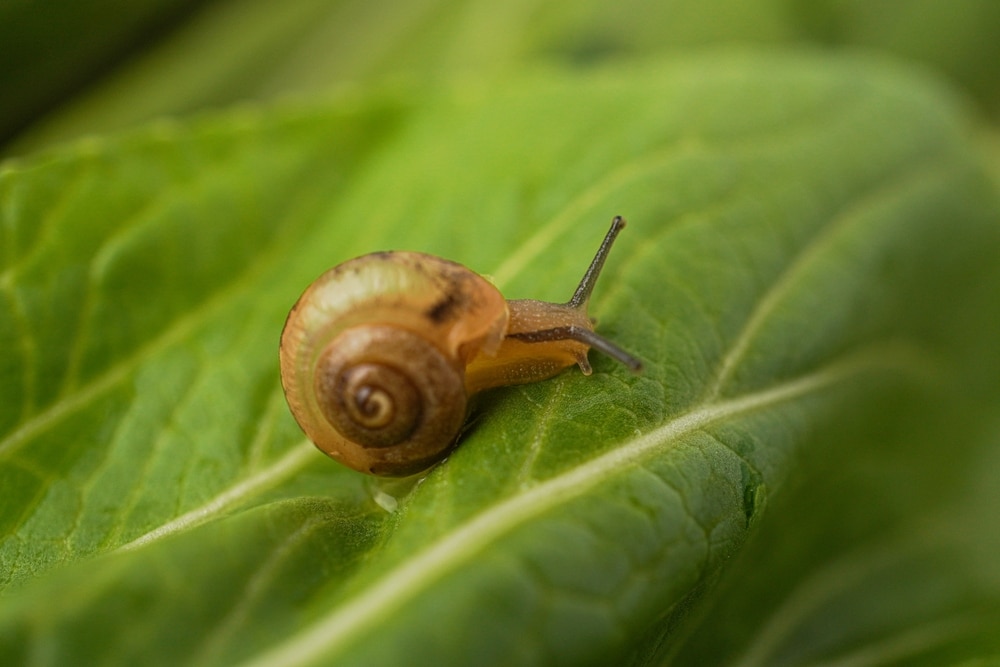
Why Are Snails Important?
Snails play a very important role in the nutrient recycling of their ecosystems. They are decomposers, meaning they aid in the decomposition process and biodegradation of plant material. They increase decomposition by a third.
Snails also aid in the nitrification of soils. This is a process that happens in both soil and water. Snails help to break down nitrogen compounds, making it easier to be absorbed by plants.
They are also considered indicator species in their environment. This means that if you see snails, there is a good chance you have a healthy and thriving ecosystem.
They are also considered a food source for predators like herptiles, birds and small mammals. All in all, snails are very useful and important to their environment!
How To Discourage Snails In The Garden
As important as snails are to the garden and other prevalent ecosystems, they can be considered pests by some. As most terrestrial snails are herbivores, they love chowing down on leafy greens, new growth shoots, and other garden favorites. If there are too many in your garden space, it can have negative repercussions on the growth success of your veggies and flowers.
My favorite mitigation technique for snails and slugs is a biological one. If you have a real snail or slug problem, ducks are one of the best ways to control these populations. This is because duck’s favorite snacks are snails and slugs! If you have a major Gastropod infestation, the incorporation of waterfowl into your homestead could be an easy and sustainable method for the mitigation of slugs and snails.

